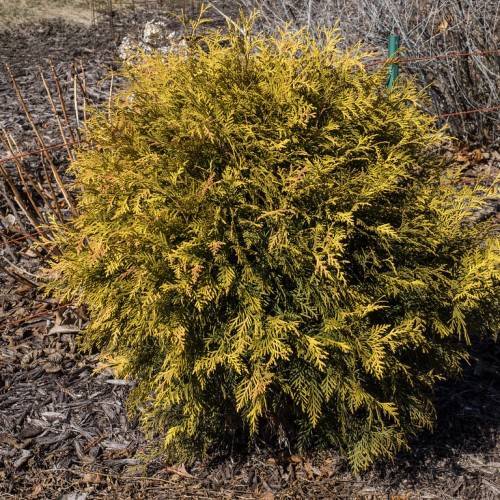
American arborvitae
Thuja occidentalis 'Gold Drop'
Cycle:
Perennial
Watering:
Frequent
Hardiness Zone:
2 - 7
Flowers:
Flowers In Spring
Sun:
Full sun, Part sun/part shade
Soil:
Sandy Loamy Clay Rocky
Cones:
Yes
Leaf:
Yes
Growth Rate:
Moderate
Maintenance:
Low
Drought Tolerant:
Yes
Care Level:
Moderate
watering
American arborvitae (Thuja occidentalis 'Gold Drop') should be watered deeply once a week during the growing season (April–October). Water the soil until it becomes moist but not soggy. During dry periods, the plant may require more frequent watering. To check if this is necessary, stick your finger into the soil about 1-2 inches below the soil surface. If your finger is met with dry soil, water the plant. In the winter (November-March), water only if the ground is dry.
sunlight
American arborvitae (Thuja occidentalis 'Gold Drop') prefers full to partial sunlight, at least 6 hours a day. It is best to place it in areas such as east-facing exposures or in locations with dappled shade. The plant will also require protection from harsh afternoon sun in the summer. American arborvitae is moderately drought tolerant but will do best when given consistent watering during hot months.
pruning
American arborvitae (Thuja occidentalis 'Gold Drop') should be pruned in the late winter or early spring, before the new growth begins. Pruning should not remove more than a third of the foliage at a time, and any cut stem should be at least 2-thirds of its original size. Pruning should focus mainly on removing dead or diseased branches, as well as those that are growing too closely together. Cuts should always be made at a 45° angle, just above a leaf node or bud.
